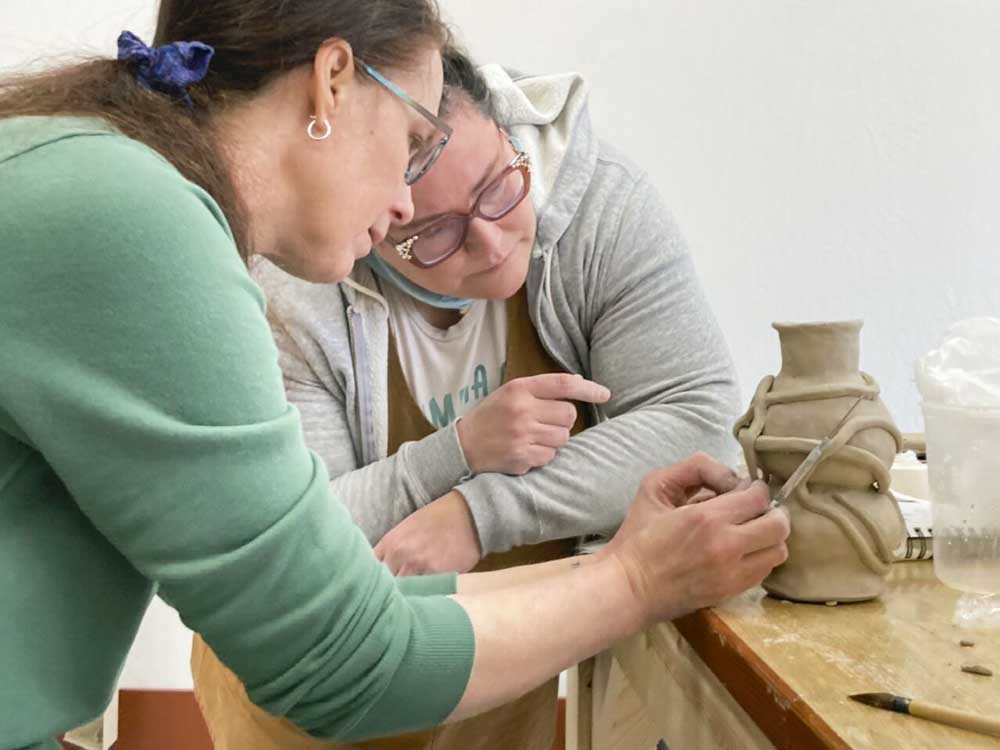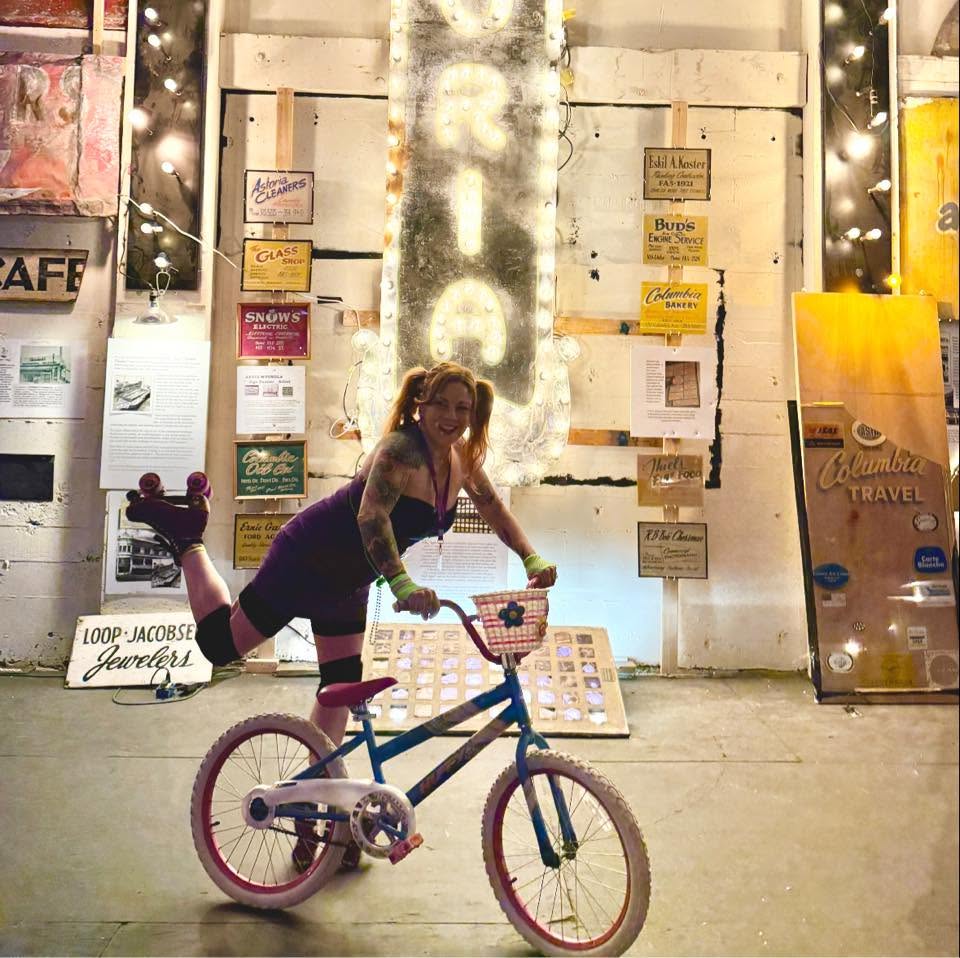Weekend Break: Form, function and meaning
Published 1:00 pm Friday, April 28, 2023

- Iris Douglas, left, consults with ceramicist Molly Schulps during a studio course.
On a Sunday afternoon, steady rain slapped at the broad pane glass window of Columbia Clay in Astoria. Inside, ceramicist Molly Schulps discussed the finer points of hand-building with a small group of focused students.
Trending
She challenged them to create a “vessel as self-portrait,” but the portrait in this case, she said, should not be expressed literally. “It’s more than just the form of the piece, it’s the idea behind it and the feelings it evokes,” Schulps said. She encourages allegory and personal memory to flow through her work and instruction in ceramics.
For one student at the studio, a fondly remembered apple tree from childhood took shape from a lump of dark clay. Another potter’s vessel rose from the table vertically, giving way to a pair of forms that lean on each other, protecting and embracing.
That student, Renya Ydstie, met Schulps through other artists and jumped at the chance to sign up for her initial course — capped at just six potters by design, to maximize time with each student.
Trending
“Molly’s class is super inspiring,” Ydstie said, coaxing the cold, gray clay upward. “It just clicks. You start making all these great connections.”
Connections are a theme that builds throughout Schulps’ life and work — connections to the past, family, place, environment and each other.
Well before Schulps became a gallery artist, before the master’s degree in ceramics and a lengthy professorship at Cypress College, Schulps was just a kid helping out her dad.
At 5 or 6 years old, Schulps was, in her own words, “a laborer” in her dad’s production studio. She recalls the studio as being “absolutely huge,” a trait that might also describe her father, a 6-foot, 5-inch, NFL defensive lineman turned professional ceramicist.
Bigger-than-life, affable, charming and gregarious, his presence and passion undoubtedly influenced his daughter, but it was one of his more subtle gestures that might have made the biggest impression. “He made me keep a sketchbook,” Schulps recalled, “and I had to draw in it every single day.”
Schulps now requires her students to keep a sketchbook, with rough outlines to be shaped by intent and intuition into future polished pieces. Splashed with bold colors and boisterous renderings, Schulps’ sculptural and functional works navigate a fine line between exuberance and vulnerability, touching on issues of ecology, place and memory.
When her father passed away 13 years ago, Schulps found herself poking at the roots of her inspiration and her understanding of a person that introduced her to an entire world. She processed it all through her art, culminating in a show, titled “Familial Folklore.” That is, Schulps explained, “how we create stories from legend” about the people we love.
During that creative fervor, a young nephew had asked in all earnestness if his grandfather was a giant. It was an idea that resonated with Schulps, and through her hands, her father was remade; reworked as Paul Bunyan, as Smokey Bear, as a protector, a builder and a true giant.
Schulps wasn’t expecting to be greeted with open arms when she and her partner, Dexter Anderson, landed in Astoria a few years back.
“I’ve finally stopped apologizing for being from California,” Schulps said with a laugh.
Any trepidation quickly evaporated when Schulps realized that locals shared her values and wanted to see her succeed. Whether collaborating with fellow artists like sign painter Anna Weber, or finding representation with Teri Sund at Imogen Gallery, she said she has been met with encouragement and advice.
“There’s so much joy in her work,” Sund said. “She considers each piece to be a part of her own sketchbook. It just makes me happy.”
Schulps’ functional pieces, like mugs, sell between $50 and $100 and may take four hours or more to complete. Sculptural works go up in price from there and can take weeks or even months to produce.
Schulps will co-curate an exhibition with Sund next year, dedicating the entire gallery space at Imogen to influential ceramic artists from around the United States.
She joins a community already rich in clay work and its advocates, including local galleries that have shown strong support for ceramics through the years.
Schulps looks to the connections and friendships she has made as proof that pottery has meaning beyond function, something that permeates the people who practice and collect it. It is something she believes goes beyond the literal, even when a clay piece is just a simple plate or mug.
“Objects are largely the way we communicate with each other,” Schulps said, “and ceramic objects are very intimate.”
1426 Commercial St., Astoria
Fully equipped, 1,600-square-foot ceramics studio, offering classes in wheel throwing, hand building and sculpture for students of all experience levels. Next round of classes begins May 31
www.columbiaclay.com









